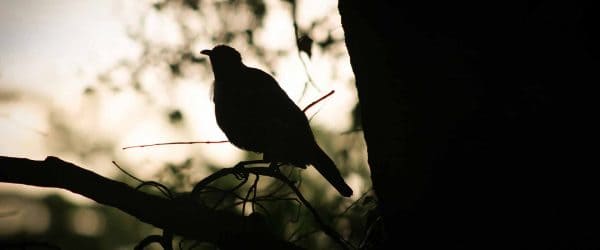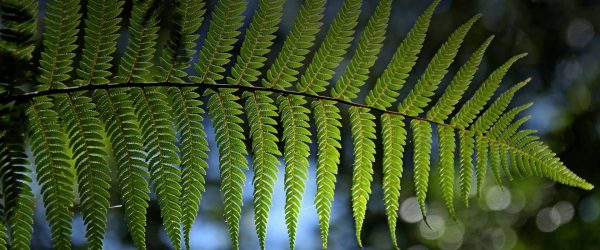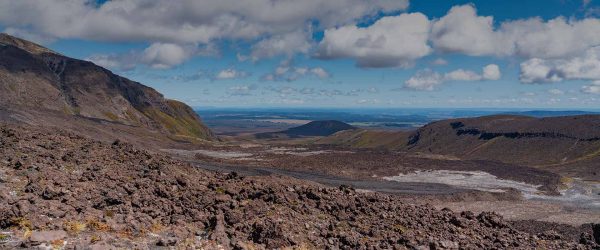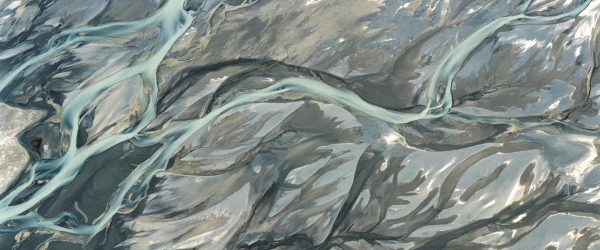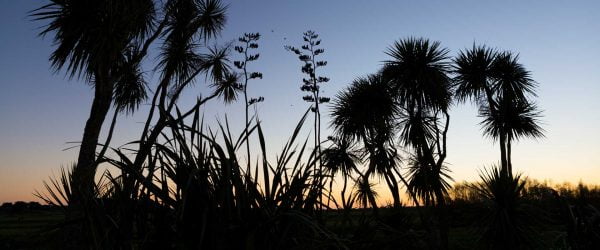Vision
Māori communities can make informed resilience decisions, enabled by innovative communication and engagement practices.
Project description
What can historic and contemporary disruptive events teach us about patterns of loss and recovery relating to Māori language, culture and wellbeing? In addition, what impact does social media and other new technologies have on the way Māori receive and share resilience knowledge? The following projects seek to understand how communication and engagement practices can be harnessed to improve resilience decision-making for Māori communities.
- Role of digital technology
Acushla (Dee) Sciascia
This project recognises the importance of quality and informed communications with Māori communities (both urban and rural) who depend on trusted sources from within their own networks, whānau, hapū and iwi. Social media technologies have played a key role in facilitating a virtual space for the practice of Māori culture across communities, thus begging the question – what is the role of digital technology in translating resilience knowledge for Māori communities? Dr Sciascia is exploring this question and working towards the development of a resilience framework for Māori knowledge sharing via social media.
- Māori earthquake resilience
Regan Potangaroa
This project explores Māori earthquake resilience in the Canterbury and Kaikōura earthquakes and earthquake-prone marae. Through whānau and hapū interviews including marae trustees and management, Prof Potangaroa is documenting and analysing Māori community recovery and wellbeing following earthquakes, to inform the transformation of communities for future events. The envisaged outcome is a deeper understanding of the emergency response phase right through to recovery and reconstruction phases, and the development of innovative solutions for whānau transformation in a post-disaster context.
- E au ai te reo – Building language resilience amongst Māori communities | Ko te take nui o tēnei Reo Rangahau Ē au ai te reo – te whakaora, whakapakari te Reo Rangahau ki roto ngā hāpori Māori.
Taiarahia Black
This project is recovering existing and new reo knowledge sources connected to language resilience, natural hazards and the revitalisation and reclamation of te reo Māori. By looking to the past, Professor Black and his students are seeking to gain a deeper understanding of the role of significant disruptive events in the decline of te reo Māori within their communities, which can inform strategies for building language resilience in the face of natural hazard risks.
Wawata
Wawata: Ka taea e ngā hapori Māori ngā whakataunga manawaroa whai mōhio, i mātua whakaritea e ngā tikanga whakawhiti kōrero, whai wāhi auaha hoki.
Whakaahuatanga papatono
He aha ngā whakaakoranga o ngā takunetanga whakararu tawhito, moroki hoki, o ngā tauira o te ngaronga me te whakaoranga anō o te reo Māori, te ahurea me te oranga Māori? Tāpiri ake, he aha te pānga o ngā pae pāhopori me ētahi atu hangarau hou i runga i te āhua o te whiwhi me te toha a te Māori i te mātauranga manawaroa? Ko ēnei kaupapa e whai ake nei e rapu ana kia whai māramatanga o te āhua o te whakamahi i ngā tikanga whakawhiti kōrero, whai wāhi hoki, hei whakapai ake i ngā whakataunga take manawaroa mō ngā hapori Māori.
- Role of digital technology | Te tūranga o te hangarau matihiko
Acushla (Dee) Sciascia
E whakakite ana tēnei kaupapa i te hiranga o ngā whakawhiti kōrero kounga, whai mōhio hoki ki ngā hapori Māori (noho tāone, tuawhenua hoki) e whirinaki ana ki ngā mātāpuna whakapono nō roto i ō rātou whatunga ake, ā-whānau, ā-hapū, ā-iwi hoki. He tūranga nui tā ngā hangarau pae pāhopori o te whakarite i tētahi mokowā mariko mō te whakahaere i te ahurea Māori puta noa i ngā hapori, me te iri ake anō o te pātai – he aha te tūranga o te hangarau matihiko ki te whakamārama i te mātauranga manawaroa mō ngā hapori Māori? E tūhura ana a Tākuta Sciascia i tēnei pātai me te mahi atu ki te whanaketanga o tētahi pou tarāwaho manawaroa mō te tiri i te mātauranga Māori mā ngā pae pāhopori.
- Māori earthquake resilience | Te manawaroa o te Māori ki ngā rū
Regan Potangaroa
E tūhura ana tēnei kaupapa i te manawaroa a te Māori ki ngā rū i muri mai i ngā rū i Waitaha me Kaikōura, tae atu ki ngā marae e mōrearea ana i te rū. E kapo ana, e tātari ana hoki a Ahorangi Potangaroa mā ngā uiui ki ngā whānau me ngā hapū tae atu ki ngā kaitiaki marae me ngā kaiwhakahaere, i te whakaoranga mai o ngā hapori Māori me te oranga i muri mai i ngā rū, hei whakamōhio i te whakaumutanga o ngā hapori ki ngā takunetanga anamata. Ko te putanga e manakotia ana, ko te māramatanga hōhohu o te wā urupare ohotata tae rawa ake ki te wā whakaora me te whakahanga anō, ā, me te whanaketanga o ngā otinga auaha mō te whakaumu ā-whānau i te horopaki i muri i tētahi aituā.
- E au ai te reo – Building language resilience amongst Māori communities | Ko te take nui o tēnei Reo Rangahau Ē au ai te reo – te whakaora, whakapakari te Reo Rangahau ki roto ngā hāpori Māori.
Taiarahia Black
Ko te take nui o tēnei kaupapa, Ē au ai te reo he whakaora ake, whakatipu kia mau te orangatonutanga reo ki ngā mōrearea, whakawhiu āwha, tūpuhi o te taiao, kia riro ai ko te reo Māori hai whakahoki ake i tōna ora. Hāngai tonu te titiro atu ki ngā whakaheke kōrero o tua. Ahorango Black me ana tauira kei te āta wānanga i ēnei āhuatanga mōrearea i ngaro ai te ngao o te reo ki ngā hāpori Māori, kia tāea ai te whakarite hōtaka, rautaki whakaora i te reo ki waenga i ngā hekenga mōrearea nei.
Resource Outputs from this project
Te Kapa o Te Reureu: Keeping the Home Fires Burning
Promoting resilience through kapa haka.
He kai kei aku ringa – Disaster preparedness
How can whānau and communities determine for themselves how best to prepare, respond and recover?
Earthquake-prone marae: Whānau-based solutions
How could a tailored approach to engineering reports achieve efficiencies and save money for individual marae communities with buildings deemed ‘earthquake-prone’?
Presentation slides, ‘Earthquake-prone marae: Whānau-based solutions’ webinar.
Prof Regan Potangaroa, 'Earthquake-prone marae: Whānau-based solutions' webinar, 20 September 2022.
Kāore te whakamā i ahau ki te taura whiu kau. A Prophet’s Lament.
Black, T. Kāore te whakamā i ahau ki te taura whiu kau. A Prophet’s Lament. Te Whare Wānanga o Awanuiārangi Printery, Whakatāne, 2022. Please contact…
Waiho Ai Au Hai Maungarongo
Turnbull, N.T. Waiho Ai Au Hai Maungarongo. Te Whare Wānanga o Awanuiārangi Printery, Whakatāne, 2022 Please contact Professor Taiarahia Black at Te Whare Wānanga o…
The Impacts of COVID-19 on Tangihanga.
Rangiwai B, Sciascia A. 2021. The impacts of COVID-19 on Tangihanga. Journal of Global Indigeneity. 5(1):1-14.
The Maori Response to a Seismic Swan Sept 2017.
Potangaroa R, Kipa M. 2018. The Maori response to a seismic 'swan'. In: Masys A, Lin L, editors. Asia-Pacific security challenges: managing black swans and…
A tale of two communities: B-race-ing disaster responses in the media following the Canterbury and Kaikōura earthquakes.
Carter LH, Kenney CM. 2018. A tale of two communities: B-race-ing disaster responses in the media following the Canterbury and Kaikōura earthquakes. International Journal of…
Ka ū ana ko Whareongaonga
Te Whare Wānanga o Awanuiārangi. 2018. Ka ū ana ko Whareongaonga: 10th of July 1868 – 12th of July 2018: 150th anniversary of the landing…
